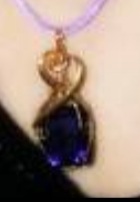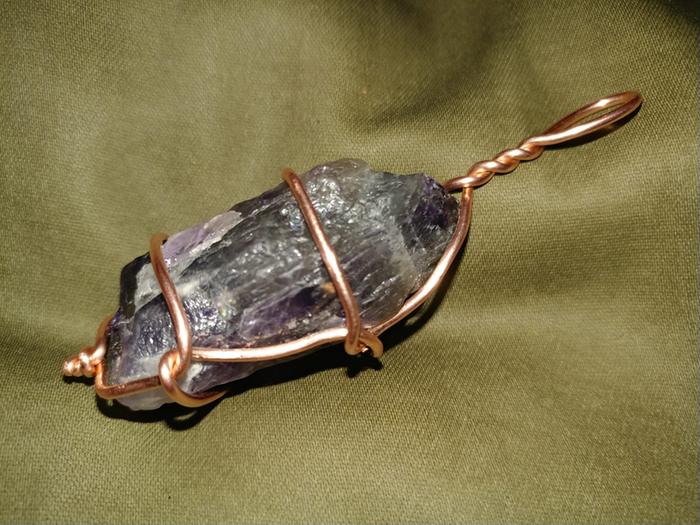
 18
18





Gardens in my mind never need water
Castles in the air never have a wet basement
Well made buildings are fractal -- equally intelligent design at every level of detail.
Bright sparks remind others that they too can dance
What I am looking for is looking for me too!

 2
2




CAT




Invasive plants are Earth's way of insisting we notice her medicines. Stephen Herrod Buhner
Everyone learns what works by learning what doesn't work. Stephen Herrod Buhner
 13
13




Rocks can be purple due to the presence of impurities like iron, which causes amethyst in quartz to turn violet, or iron in minerals like hematite and limonite. Other minerals that cause purple coloration include fluorite, sodalite, spodumene, and even biological deposits like coralline algae in marine environments. The specific mineral and its chemical state determine the exact shade and intensity of the purple.
Common Causes of Purple Coloration
Iron (in quartz):
The most common purple mineral in rocks is amethyst, a variety of quartz that gets its color from iron impurities within the silicon-oxygen crystal structure.
Iron (in other minerals):
Ferric iron (Fe+3) is responsible for many red, yellow, and purple hues, often found in minerals like hematite and limonite.
Other Elements:
- Manganese: Can produce pink crystals and is also a component in some manganese oxides that create purple coloration.
- Magnesium: Can also contribute to color, as seen in some magnesium-rich rocks.
Porphyry:
While not inherently purple, some types of porphyry can have a striking purple appearance and were historically used to symbolize power and royalty.
How the Color Develops
Impurities:
Elements like iron or manganese enter the crystal lattice of a mineral, replacing some of the original atoms and absorbing certain wavelengths of light to produce color.
Radiation:
Exposure to radiation can restore iron to a more typical chemical state, enhancing the purple color of amethyst.
Organic Matter:
In some cases, partially decayed organic matter, which can have purple hues, can contribute to the color of sedimentary rocks.
How permies.com works
What is a Mother Tree ?
 8
8




Gardens in my mind never need water
Castles in the air never have a wet basement
Well made buildings are fractal -- equally intelligent design at every level of detail.
Bright sparks remind others that they too can dance
What I am looking for is looking for me too!

 13
13




 10
10




Gardens in my mind never need water
Castles in the air never have a wet basement
Well made buildings are fractal -- equally intelligent design at every level of detail.
Bright sparks remind others that they too can dance
What I am looking for is looking for me too!





Google said, Chevron Amethyst, also known as banded or dogtooth amethyst, forms when layers of amethyst combine with white quartz in a naturally occurring V-shaped or zigzag pattern.
Invasive plants are Earth's way of insisting we notice her medicines. Stephen Herrod Buhner
Everyone learns what works by learning what doesn't work. Stephen Herrod Buhner
 5
5




Anne Miller wrote:According to some sources that might be called Chevron Amethyst.
Gardens in my mind never need water
Castles in the air never have a wet basement
Well made buildings are fractal -- equally intelligent design at every level of detail.
Bright sparks remind others that they too can dance
What I am looking for is looking for me too!

 1
1




Pearl Sutton wrote:
Anne Miller wrote:According to some sources that might be called Chevron Amethyst.
I wish it was! Those are lovely!
It's a Missouri ditch rock, and the Chevron Amethyst is only found in India, Russia, and and Brazil.
Google says, Other notable sources include parts of the United States, Mexico, and Uruguay. The formation process involves silica-rich solutions filling cavities in rocks, leading to alternating layers of amethyst and white quartz in a characteristic V-shaped pattern
Invasive plants are Earth's way of insisting we notice her medicines. Stephen Herrod Buhner
Everyone learns what works by learning what doesn't work. Stephen Herrod Buhner

 10
10




 10
10




 7
7




Tereza Okava wrote:wow, mozarkite tumbles up beautifully!!
i used to be really into rocks and minerals as a kid, and managed to let it slide as my interests moved elsewhere. maybe it's time to get back into it!
https://rocktumbler.com/rough/mozarkite/
Gardens in my mind never need water
Castles in the air never have a wet basement
Well made buildings are fractal -- equally intelligent design at every level of detail.
Bright sparks remind others that they too can dance
What I am looking for is looking for me too!

 9
9





Gardens in my mind never need water
Castles in the air never have a wet basement
Well made buildings are fractal -- equally intelligent design at every level of detail.
Bright sparks remind others that they too can dance
What I am looking for is looking for me too!

 11
11




Country oriented nerd with primary interests in alternate energy in particular solar. Dabble in gardening, trees, cob, soil building and a host of others.
 6
6




Burra Maluca wrote:Common Causes of Purple Coloration
Iron (in quartz):
The most common purple mineral in rocks is amethyst, a variety of quartz that gets its color from iron impurities within the silicon-oxygen crystal structure.
Iron (in other minerals):
Ferric iron (Fe+3) is responsible for many red, yellow, and purple hues, often found in minerals like hematite and limonite.
 12
12





"The only thing...more expensive than education is ignorance."~Ben Franklin. "We can easily forgive a child who is afraid of the dark; the real tragedy of life is when men are afraid of the light." ~ Plato
 11
11





How permies.com works
What is a Mother Tree ?
 7
7




Rick Valley at Julie's Farm
 6
6




Rick Valley wrote: I want to see you massively infected by the rockhound bug!
Gardens in my mind never need water
Castles in the air never have a wet basement
Well made buildings are fractal -- equally intelligent design at every level of detail.
Bright sparks remind others that they too can dance
What I am looking for is looking for me too!

 6
6




Rick Valley at Julie's Farm
 7
7




 6
6




Jim Cyrus wrote:It's Mozarkite. Central Missouri gem quality chert. Polishes extremely well. The pink and purple are from iron.

|
I think they should change the spelling to Sandy Eggo. This tiny ad agrees with me.
Learn Permaculture through a little hard work
https://wheaton-labs.com/bootcamp
|


